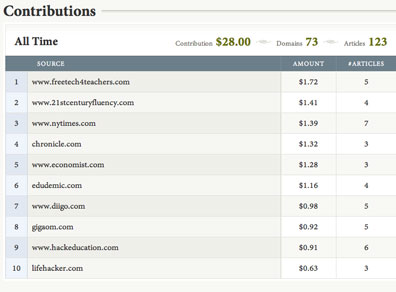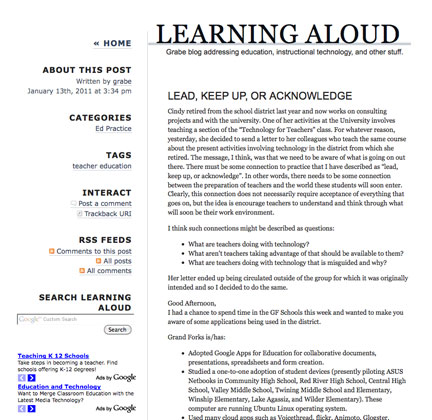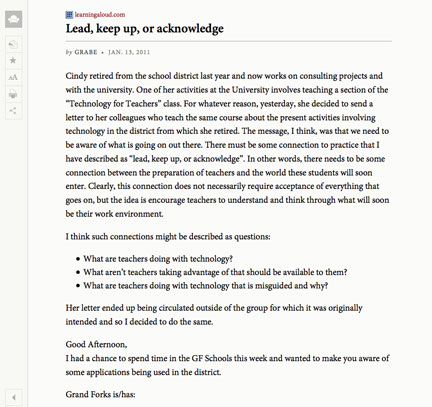I am kind of like Public Radio – every so often I lay this guilt trip on people reminding them that the content they appreciate costs someone some money.
The notion of free content is mostly an illusion – you pay, you tolerate ads, you tolerate a provider’s self promotion, someone else pays, or you trade personal information for content. I like the idea of “we trade”, but I wonder how well this has worked. I can tolerate any of these options as long as I can determine the motivation and I do not have to listen to someone claim that “information just wants to be free”.
Here are a couple of ideas I endorse and have subsidized. My contributions were modest, $60 and $25 if I remember correctly, so this is about encouraging lots of people to accept responsibility rather than assuming big donors will step forward.
Readability offers users an option that gives 70% of fees (30% to Readability) to registered publishers with a Readability user stores the text from a web site for later review. This seems fair to me since this system also does not display the ads that might have originally accompanied the content. I decided to give this a try – I am in for $5 a month.
My latest investment is in the open source project “Disaspora“. The idea here is to create an open source and unaffiliated social networking site very similar to Google +. The site is now hosted, but the long term goal would allow organizations to host their own “node” (I think that is the term). I like the idea of a more diverse environment not so narrowly linked to a few commercial providers.
![]()



You must be logged in to post a comment.